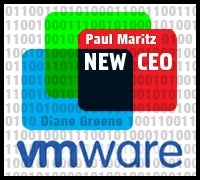 |
Less than two weeks ago, new VMware CEO Paul Maritz announced in the firm’s second quarter earnings call that the next version of its ESXi hypervisor
The act itself was not as much of a surprise as its timing. Observers had been saying that VMware (NYSE: VMW) needed to cut prices to keep pace with market trends.
The threat from Microsoft (NYSE: MSFT), which sped up the release of its Hyper-V hypervisor, loomed large behind the swift unveiling of the free version of ESXi. Maritz has said speed and constant innovation are the ways to beat Microsoft.
VMware will eventually take the earlier, price-based version of ESXi off the table and will look to make money on its virtual infrastructure products.
“This is a continuation of an ongoing strategy,” John Gilmartin, VMware’s group manager of product marketing, told InternetNews.com. “We believe virtualization needs to be, and will be, ubiquitous, and have been working to accelerate that.”
He pointed out that VMware has previously slashed another product’s price to zero. This is the GSX Server, now known as VMware Server 2.0.
Gilmartin said VMware had to make sure ESXi satisfied a couple of conditions before releasing the new version. These are ease of use and the confidence that “this product going out into hundreds of thousands of peoples’ hands would have the maturity and stability to not elicit calls for help,” he said, in a dig at Microsoft.
Observers have long been calling for a price cut and are applauding VMware’s move. “This price change was an aggressive but arguably inevitable move,” Kevin Epstein, vice president of marketing for Scalent, told InternetNews.com. “It seems to acknowledge market dynamics.” Scalent works with VMware as well as its archrival Citrix and other virtualization vendors.
Battling Microsoft
The new pricing is right in line with Maritz’s vision for battling Microsoft and might be familiar to those who remember his tenure at the software giant. Maritz was the Microsoft senior executive who executed some of that company’s most successful wars against the competition, including killing off Netscape’s browser.
“The key to Microsoft is to innovate, invest, stay ahead, keep increasing the customer value proposition and that’s what we intend to do,” Maritz said during the earnings call. “Microsoft is a formidable but not invincible, competitor.”
In line with that, VMware will “make the hypervisor freely available, then educate people on the value of virtual infrastructure — high availability, live migration,” the firm’s Gilmartin said. “These create value for large-scale deployments.”
Moving to a free download model is a clever tactic, Christina Noren, vice president of product management at Splunk, which offers an IT search engine free for downloading, told InternetNews.com. “In the two and a half years our product has been on the market, we’ve seen 250,000 downloads, and out of this we got 750 paying customers with several blue-chip players,” she added.
Splunk’s model is to offer the basic software, which can be used by one person, free. It charges when customers want to move up to the enterprise level.
“To compete with a larger, better-funded competitor, you have to be able to change strategies on a dime, and you can do that if you’re operationally well structured,” Noren said. “I think that’s a smart move on VMware’s part because they can get people started on virtualization for free and then find other ways to monetize.”


